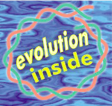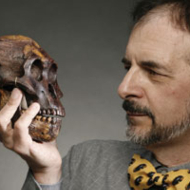“What does evolution have to do with anatomy?” This was a regular question from the students in my introductory anatomy classes. We used a textbook by Kenneth Saladin, which is one of the very few that provides any evolutionary context at all for human anatomy and physiology. Saladin’s book lists “evolving” as one of the four unifying principles for the understanding of anatomy, and I took pains to include the evolutionary foundations of the structural and functional features that students needed to learn.
Evolution: Feel it in your fingers and feel it in your toes
Andrew J. Petto, distinguished lecturer emeritus at the University of Wisconsin‒Milwaukee, explains why evolution was a centerpiece of his anatomy instruction.
We teach evolution in our anatomy classes because evolution connects us to all life on earth, but also because it connects us to each other.
Our class explorations included the F-E-D-U-P (Function‒Evolution‒Development Understanding Protocol) mnemonic for understanding how human form and function are as they are today. Students needed to understand that these three components—function, evolution, and development—influence the modern human organism that they would deal with in their chosen careers.
We made evolution a centerpiece of anatomy teaching for several reasons. First and foremost, evolutionary science provides the only successful framework that accounts for the observed pattern of similarities and differences among living organisms on earth from all times and places where we have observed life. Evolution allows only one arrangement for this pattern—descent with modification from a common ancestor—and every new discovery is an explicit test of the theory. So far, evolution has always passed the test.
Second, all the biologic processes that we observe in the normal functioning of the human organism—and that we share with all life on earth—are also the processes that drive evolutionary change. These include the processes that underlie all the other six fundamental characteristics of life on earth: cellularity, autopoiesis (metabolism, homeostatic processes, and mechanisms for responding to environmental conditions), reproduction, development over a life cycle, biologic organization and integration, and interindividual variation.
Some aspect of each of these processes plays a role in both the success of the human organism (or any other) and in the processes of biologic change that produce evolution in living populations. And though students often study other organisms in their anatomy labs to learn about the structure and function of life, they too seldom approach the biology of those other organisms from a modern evolutionary perspective: looking at the “what” rather than the “why” of the organisms that they study in their courses. They mostly take the biologic similarities at face value, as random facts: cats and pigs and rats are mammals, so they should be more like us than birds and frogs and sharks. Rarely do their courses provide for them the phylogenetic pattern that organizes this variation along the lines of biologic descent.
Because most of our students are in biomedical- or healthcare-related majors, they approach human form and function in clinical or sometimes pathologic terms: they are interested in the ways in which normal form and function are disrupted and how to return them to some acceptable range of values. They focus on the immediate, short-term aspects of how things work and how to fix them, in part because their subjects present with an immediate need.
More broadly, the devaluation or de-emphasis of evolutionary science is common in clinical disciplines, and it is one of the reasons that creationists like to trot out physicians and dentists to deny evolution. For example, at a school board forum in West Bend, Wisconsin, David Menton, a medical doctor and cell biologist formerly of Washington University’s School of Medicine and now on the staff at the young-earth creationist ministry Answers in Genesis proudly told the audience that he had done medical research and teaching for decades and never once had to refer to evolution to do research successfully about any of the structures or functions in his discipline.
This is not implausible: because clinical approaches to human biology are more focused on how things work, it is possible to ignore the questions of why they work they do. However, Menton's claim was like saying, “I have used refrigerators my whole life and never once have I had to consider the ideal gas laws or the laws of thermodynamics!” As true as the statement might be, it does not take into account that these laws are reflected in the structure and function of refrigerators, and without these laws, the refrigerators are nothing more than insulated boxes. To understand how and why refrigerators can work the way they do—or to be able to build one—it is necessary to recognize the scientific laws and processes that are required for their form and successful function.
 Evolution is one of those fundamental forces that shapes life on earth. As former NCSE staffer Wesley R. Elsberry pointed out with his iconic “evolution inside” graphic, the processes of evolution are embedded in human anatomy and physiology (and in the structure and function of all organisms on earth). These same processes are responsible for sustaining all life on earth and for the evolutionary change that has produced the observed patterns of similarities and differences of life on earth...and continues to do so. We teach evolution in our anatomy classes because evolution connects us to all life on earth, but also because it connects us to each other.
Evolution is one of those fundamental forces that shapes life on earth. As former NCSE staffer Wesley R. Elsberry pointed out with his iconic “evolution inside” graphic, the processes of evolution are embedded in human anatomy and physiology (and in the structure and function of all organisms on earth). These same processes are responsible for sustaining all life on earth and for the evolutionary change that has produced the observed patterns of similarities and differences of life on earth...and continues to do so. We teach evolution in our anatomy classes because evolution connects us to all life on earth, but also because it connects us to each other.

